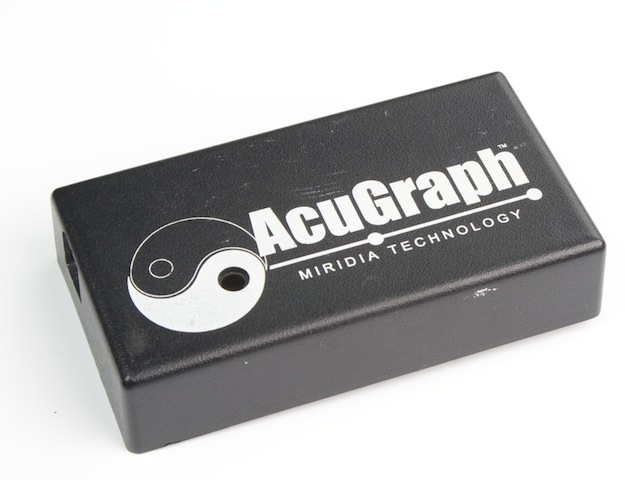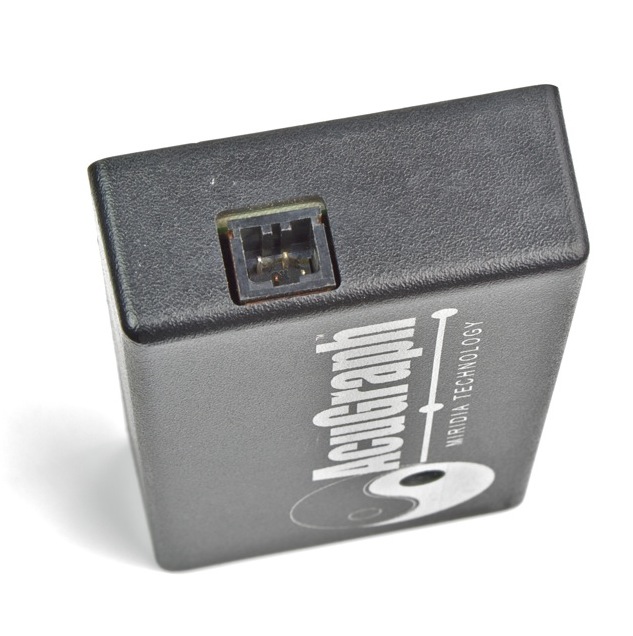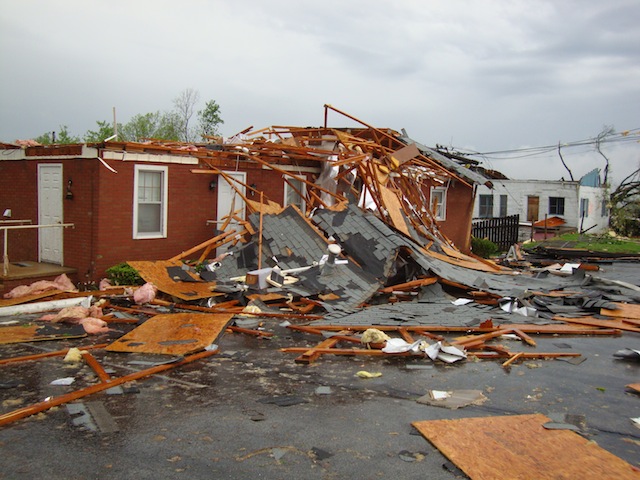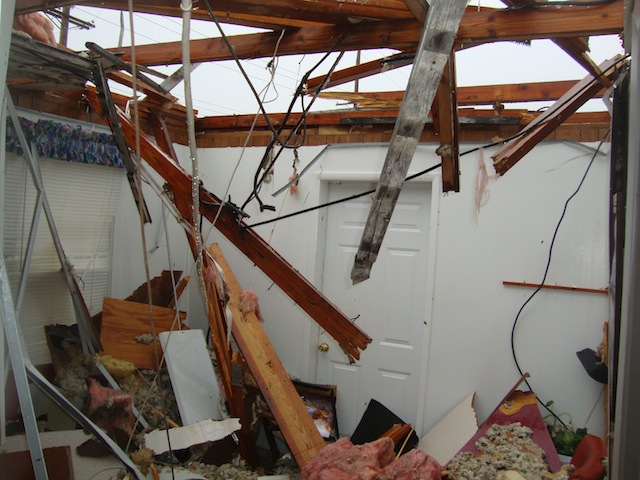Remember This?
If you don’t remember, these pictures are from Dr. Dennis Baker’s clinic after it was hit by a tornado. The building was a complete loss, but I’m pleased to report construction has begun on a new building, to be completed in the next three months.
Now I know what you’re thinking: What happened to Dr. Baker’s AcuGraph system? Did it survive?
I’m glad you asked.
Dr. Baker’s AcuGraph spent some time completely submerged in water. When he finally retrieved it from the building and got it dried out, he was afraid to even plug it in, not knowing what might happen. So he sent it to me. Here’s a couple of pictures (after the processor was cleaned up):
 Note the rust showing around the probe socket. When I opened the case, there was even more rust and, frankly mud, inside. But being the adventurous sort, I decided to try it anyway. So I plugged it in and tried a graph.
Note the rust showing around the probe socket. When I opened the case, there was even more rust and, frankly mud, inside. But being the adventurous sort, I decided to try it anyway. So I plugged it in and tried a graph.
It worked.
Perfectly.
Now, I’m not suggesting you try this yourself. Obviously, getting your processor wet will void your warranty and potentially destroy your system. In fact, Dr. Baker made the right move and opted to replace his AcuGraph system, rather than continuing to use this compromised processor, which had already seen 8 years of service, along with some really bad weather.
But isn’t it nice to know they’re built right?

